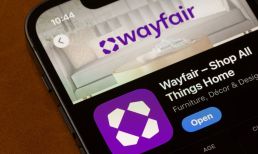Despite reports to the contrary, customer loyalty is not quite as dead as it has been advertised to be. A recent study by American Express indicated that 58 percent of the general population say they will stick with the same brand of products no matter what. Millennials, perhaps surprisingly, tested out as especially likely to become committed — with 62 percent reporting a strong preference for sticking with a favored brand through thick and thin.
That is the good news. The tougher news is that building that favored feeling in the customer is not exactly easy. The go-to method for creating that most-favored-brand relationship is the loyalty rewards offering. The details vary, but the structures are usually pretty similar. The more a customer shops, the more points (or miles or whatever the local euphemism for loyalty points is) they earn. When customers have a sufficient number of points, they might get a discount, or a free gift or access to exclusive experiences or privileges. It makes sense and on paper is basic behaviorism applied to retail — if you want someone to do something, reward them every time they do it.
And yet, customers don’t really like loyalty programs nearly as much as the retailers that offer them would like them to. It is not that most consumers are opposed to getting a discount, treat or special experience — it is just that many consumers complain that having to manage loyalty offerings is not at all rewarding and in many cases not actually worth it.
As BigCommerce Senior Executive Chris Shalchi notes, consumers are offered and enrolled in so many loyalty programs, it can get complex very fast trying to manage all those programs separately. No one, he notes, actually likes “having unique accounts for all of their airline miles and a wallet overflowing with sandwich shop punch cards.”
Blockchain technology, he argues, could solve that problem — simply by offering a single, transparent and easily navigable access point for all their loyalty points.
“Instead of joining dozens of different programs for each business a consumer is loyal to, they can join a network,” he said. “Shopping with businesses in that network provide reward tokens. These tokens don’t expire and can’t be taken away. And they aren’t just redeemable at one business but with any business in the network.”
Advertisement: Scroll to Continue
The customer, he said, gets to have all their points in one place and a wider set of options in how to disperse them. The businesses, he argues, get the advantage of a loyalty program that “can also be less expensive to create and maintain.”
So, problem solved?
Well it is early to tell, as attempting to build blockchain-based loyalty networks is still a relatively novel concept. Chanticleer Holdings, is looking to build a blockchain loyalty program through a collaboration with MobivityMind for a variety of burger chains it has invested in; Aeron, a blockchain-based aviation safety project, is working to develop something like this for the airline industry. But the applications of the concept are limited and in early phases, which means it is still early to determine if blockchain loyalty lives up to the hype.
However there are some reasons to have doubts.
Apart from the high-tech blockchain twist, the concept standing behind the crypto-loyalty concepts isn’t new at all. What Shalchi describes is basically a blockchain-based coalition loyalty offering, and coalition loyalty has been around for decades — the model has been used extensively in Europe.
But it has struggled in the U.S.
About four years ago, American Express made a play to bring coalition loyalty to the U.S, with the release of the Plenti program with a great deal of fanfare and a pretty impressive roster of merchants participating in the program (coalition loyalty programs rise and fall on the quality of the networks of merchants they offer) including Macy’s, Exxon-Mobile and RiteAid.
“It will really be the first time where U.S. consumers, on a single program, can take the rewards they’ve earned in one industry and take it to another,” said Abeer Bhatia, chief executive of U.S. Loyalty at American Express at the time the program rolled out.
But three years later, in 2018, Amex officially pulled the plug. Ultimately, however, Plenti never really managed to make a dent in consumers’ shopping habits – they may have signed up to receive their swipeable plastic Plenti card, but they didn’t use them all that often.
Paired with that somewhat lackluster reaction among consumers was a merchant base that quickly grew a bit disillusioned with the service. By 2017, retailers began dropping out — and by the beginning of this year, AT&T, Chili’s, Alamo, Direct Energy, Enterprise, Expedia, Hulu, Nationwide and Macy’s had all indicated their intentions to leave the Plenti platform.
One Macy’s source told PYMNTS that the program didn’t drive much of the way of traffic to Macy’s — and that consumers often took advantage of “asymmetrical” opportunity to input and extract value.
Consumers could — and apparently often did — generate points at “staple” shops like grocery stores and gas stations, places where points are relatively easy to collect, before expending those points at Macy’s, where they could be used against a wider range of goods. That was a good deal for consumers, but not a great deal for Macy’s.
How blockchain could stop such asymmetrical uses of a coalition loyalty is unclear unless the networks would only between merchants in similar lines.
But then, why would competitors want to share a loyalty program?
This is not to say that a blockchain version of coalition loyalty cannot work, but to note that blockchain, in and of itself, doesn’t solve for the weakness that have brought down programs like Plenti.




